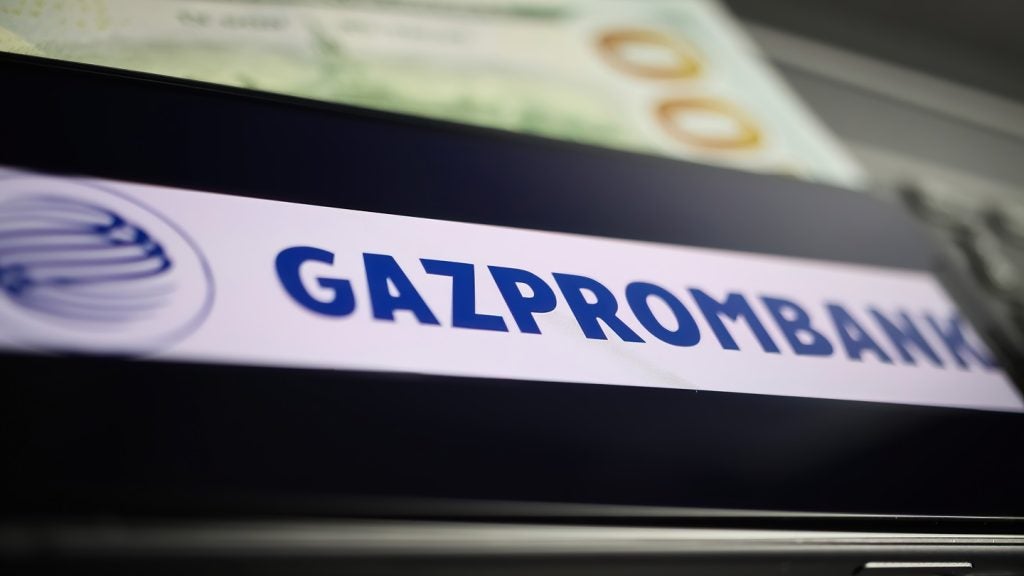Chartered announced record profits in 2007, driven by excellent
earnings in Hong Kong and healthier returns from its India
division. Michael Wiegand, the bank’s head of consumer strategy,
tells William Cain that the Asia-focused group remains committed to
its high-growth strategy.
If imitation is the sincerest form of flattery, then Standard
Chartered (Stan¬Chart) might be forgiven for changing its trademark
green and blue branding to a hot, red blush in 2008.
StanChart’s once-derided strategy of plugging away in emerging
markets was fully vindicated in 2007, with a record set of results.
Its rivals, burned by the US subprime crisis, are now following its
lead – in droves. Exposure to countries such as Pakistan, Nigeria
and China would have been at the bottom of most of the big hitters’
priority lists a few years ago. Now some of the world’s largest
banks are dropping flagship units in the West to free up funds for
acquisitions across Asia, Africa and the Middle East.
“We’re definitely in the right place at the right time,” says
Michael Wiegand, StanChart’s head of consumer banking strategy,
speaking to RBI. “Our strategy has always been to focus on
emerging markets and they are the fastest growing in the world
right now. And even within those markets we have certainly
positioned ourselves correctly.”
Particularly interesting, according to Alex Potter, European banks
analyst at financial services group Collins Stewart, is that the
profits were underpinned by a strong retail banking performance. He
said: “2007 was the first time in a long time the retail banking
business has pulled its weight within the group: growth generated
by the consumer bank was pretty equal to growth generated by the
wholesale bank. That’s a bit of a change, and a large part of that
is in Hong Kong, which is the largest part of their retail bank by
a long way.”
Emerging markets have given StanChart a head-start over its Western
peers. But strategic positioning in retail banking is what has
differentiated it from competitors across Asia, Africa and the
Middle East – its more natural peer group.
Changing focus
The group’s focus in previous years has been based around pushing
new products into markets where it had few or no competitors,
according to Wiegand, who worked at consultant McKinsey before
joining StanChart two years ago. The bank is now concentrating on
deepening customer relationships, and cross-selling products from
the much wider range of services it offers as competition starts to
heat up. Having established a broad base in retail banking, it is
now gaining an increasingly strong position in the mass affluent
segment.
How well do you really know your competitors?
Access the most comprehensive Company Profiles on the market, powered by GlobalData. Save hours of research. Gain competitive edge.

Thank you!
Your download email will arrive shortly
Not ready to buy yet? Download a free sample
We are confident about the unique quality of our Company Profiles. However, we want you to make the most beneficial decision for your business, so we offer a free sample that you can download by submitting the below form
By GlobalDataThat process has been helped by improvements in the bank’s
distribution. The number of its branches has jumped from just 450
in 2003 to 1,600 in 2007. While still a relatively modest number
for a bank that operates across such a wide geographical area – it
is equivalent to the number of branches HSBC has in the UK alone –
it has helped StanChart become more accessible to its
customers.
Wiegand said: “By having so many more branches, and as other
channels have evolved, people can have a core banking relationship
with a bank that doesn’t have the largest number of branches. That
makes us a more compelling and competitive core bank.
“It’s legitimate for people to have a range of products with us,
whereas four or five years ago, we just had a couple of branches
and we were basically the pioneer in credit cards – we would be the
one that sold everyone a credit card. That’s how it has evolved for
us. In the past, it was much more of a strictly product innovation
and product-push approach. Now we have a full range of products and
have adopted a more relationship-, needs-based approach.”
And it’s a strategy that has paid handsome dividends – 2007 was
StanChart’s best year. Total pre-tax profits were $4.04 billion, up
27 percent from 2006; retail banking, which includes SMEs and
wealth management, made up $1.68 billion of that, an improvement of
26 percent. Wholesale banking also had another good year, at $2.3
billion, up 27 percent.
Potter at Collins Stewart added: “It’s seen as relatively
blue-blooded in an Asian sense – it has an aspirational value to
its brand which many locals don’t. What you find is it attracts
quite a strong following from what you might call the ABC1s, in
OECD [Organisation for Economic Co-operation and Development]
language, the upper end of the social scale, which means when you
see the Standard Chartered brand appearing, it attracts customers
relatively quickly.”
But how can StanChart progress after such an impressive year? There
has been some speculation the bank might seek a bargain acquisition
in either the US or Europe, taking advantage of depressed bank
valuations in those markets, ahead of a potential upturn. But
Wiegand said it was unlikely.
He said: “Our strategic intent is still Asia, Africa and the Middle
East. That’s our focus and intent. [The US and Europe are]
certainly outside of our core area of expertise. Also, we’re in the
fastest growing markets, which is why our investors invest in us.
Internally, that’s where we continue to focus.”
That focus was evident in StanChart’s $823 million acquisition of
American Express Bank, the international private banking subsidiary
of US card network American Express, which was confirmed at the end
of February. The business has 74 locations in 47 countries and
focuses on high net worth individuals and affluent customers.

Indian income passed $1bn
Among those American Express Bank branches, seven are in India,
which are particularly valuable because of restrictions on opening
branches in the country. India was one of the highlights for
StanChart in 2007, as operating income passed the $1 billion mark.
Income growth in the consumer business doubled to 26 percent, with
strong growth in wealth management, SME business and personal
lending.
Wiegand said: “In India, you need to be careful on costs. One of
the challenges you find on the lending side is the ticket cost is
quite small, so you have to manage your costs quite well. I think
with wealth management and SMEs, strong relationships are a key
thing. Our SME business has had huge growth. We only started it
three years ago and have more than 10,000 SME customers, which we
see as a huge engine of growth going forward.”
But he said mortgages and credit cards were tough businesses in
India because of narrow margins and a strong focus on risk
management is needed. The bank remains a top-six player in both the
cards and mortgages markets; Wiegand added: “It’s not as though
we’ve exited [those markets], we’ve just focused on the upper end
of the market – we’re still a significant player.” The bank is also
exploring the use of technology in the market, recently launching
mobile banking services that allow cardless cash withdrawals and
m-payments (see RBI 587).
As well as having the largest presence of the international banks
in India, Standard Chartered is among the leading international
banks in the booming Chinese market. It was one of the first to
become locally incorporated, alongside the likes of HSBC, Citi,
Bank of East Asia and Hang Seng Bank, meaning it can offer certain
yuan-denominated products. It is waiting for regulatory permission
to issue local currency debit and credit cards, and has a 19.9
percent stake in domestic outfit China Bohai Bank.
Wiegand said: “For us it’s really one of our core focus markets.
We’re investing heavily, growing from 21 branches to 30 during
2007. We hope to move to 60 by 2008. Certainly for us, part of
being successful will be managing that growth. By Chinese
standards, 60 branches is not much, but relatively, it’s a huge
amount of growth that we need to manage.”
Managing that growth is made doubly tricky because there are
restrictions on the number of branches a foreign bank can hold in
an individual city. It means StanChart’s branch network is spread
widely across the country. Wiegand said introducing new products
would be a key part of the bank’s strategy in China – it launched
80 in 2007. StanChart was the first, for instance, to introduce an
unsecured instalment loan product for consumers in the
country.

Growth opportunities
Alongside China and India, Wiegand expects the United Arab Emirates
(UAE) and Pakistan to be among the fastest growth markets in retail
banking. In Pakistan, StanChart has 124 branches following its
acquisition of Union Bank, making it a legitimate core bank for
their customers, according to Wiegand.
In the UAE, Standard Chartered is focusing on the vast expat
community across the region, especially in the main cities. The
highest concentration of expats is in Dubai, where they make up 90
percent of the population.
And while GDP growth is accelerating in these countries, banking
growth is increasing at multiples of that because of the
surprisingly low level of banking penetration.
Wiegand said: “The advantage that we have is that a lot of those
expats come from South-East Asia or other parts of the Middle East,
including significant numbers in Jordan and Lebanon, which are all
markets where we have a strong presence and a well-known brand. We
have a certain advantage with expats coming from those countries,
both in terms of name recognition, but also in terms of our ability
to service them in both the UAE and their home countries.”








